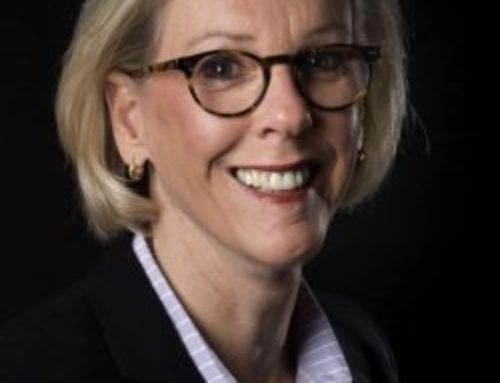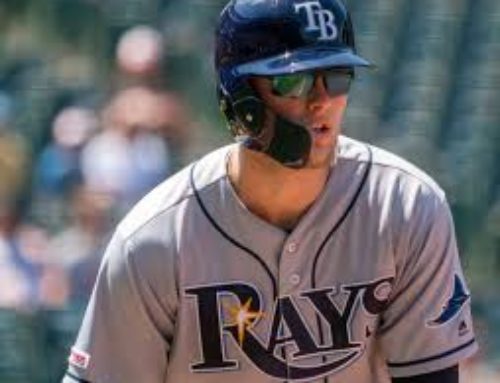The impact of Lee Roy Selmon on the Tampa Bay community was felt during his playing days, after he retired and continues today, years after his death.
By JOEY JOHNSTON
Tribune Staff Writer
(c) Tampa Bay Times. Originally published April 23, 2016.
TAMPA — Forty years ago — before the league staged a combine, before around-the-clock analysis, even before the birth of ESPN — the expansion Tampa Bay Buccaneers rather quietly made the franchise’s first selection in the NFL draft.
The Bucs picked Lee Roy Selmon, a defensive lineman from the University of Oklahoma.
“It was not a difficult decision,” said Ron Wolf, who was the franchise’s vice president of football operations. “The Oklahoma people spoke of him with a certain awe. We felt he would have an impact.”
He did — and in ways no one could have imagined.
Selmon displayed a dazzling package of strength and speed, helping the fast-moving franchise to the brink of Super Bowl XIV in only its fourth season, eventually earning induction into the Pro Football Hall of Fame, although injuries shortened his career to just nine years.
Four decades later, even after his tragic death in 2011 at age 56, he continues to influence the Tampa Bay area.
Thursday night, the Bucs will again be on the draft clock. As always, they will seek a talented athlete, a self-motivated leader, a high-character representative of the franchise. In each category, Selmon set the standard.
“I never got to meet him, and I will always regret that,” said University of South Florida football coach Willie Taggart, who was hired in 2012. “I do feel his spirit. I wake up every day, come to work and try to do something that emulates what he did. The Selmon name is gold.”
To some, the Selmon name means USF football. When he joined the school’s athletic staff, the program essentially became reality. He served as fundraiser, adviser and athletic director. His calm, reasoned guidance was credited as a major reason for USF’s acceptance into the Big East Conference. The school’s athletic facility is named for him. Hundreds of athletes benefit from a cutting-edge mentoring program that was his brainchild.
To others, the Selmon name means a restaurant. The Lee Roy Selmon’s barbecue chain opened its first location in 2000. By design, it has a down-home feel. Selmon wanted to replicate the food and hospitality offered by his mother in Eufaula, Oklahoma.
And to thousands of commuters each day, the Selmon name means a road. The Lee Roy Selmon Expressway, the former Crosstown Expressway that was renamed in 1999, connects South Tampa and the MacDill Air Force Base area with downtown Tampa while continuing into Brandon. Selmon often joked he never profited from the tolls while saying he had nightmares about receiving a ticket on the highway named for him.
“When the Bucs drafted Lee Roy Selmon, just think of the influence that one act had on our city,” former Tampa mayor Dick Greco said. “It made his teammates into better people. Of course, it ultimately helped make the Bucs into a playoff-type team. It provided one of the greatest citizens we’ve ever had around here.
“Most of all, we got a role model for our young people. The best role model, in my view.”
Selmon’s NFL statistics and honors speak loudly: 78.5 sacks, 28.5 forced fumbles, six Pro Bowl selections, the NFL Defensive Player of the Year in 1979, his No. 63 being retired, becoming the first player inducted into the team’s Ring of Honor and, of course, his presence in Canton.
But to gain a measure of Selmon, the football player, it’s all about stories.
And there are many.
Wolf remembers considering — very briefly — Arizona State defensive back Mike Haynes. He also said the Baltimore Colts were hot for the No. 1 pick, but never came close to a suitable trade package.
“I’m sure they would’ve taken Lee Roy,” Wolf said. “Everyone was interested in him. It didn’t take a genius to pick him. He had the strength of a 1,000-pound man. He was quick as a cat. I don’t think there has been a better first pick in the draft — ever.”
Tampa Bay’s defense utilized mostly a 3-4 alignment, which made the Bucs into a No. 1-ranked unit, but diminished Selmon’s individual accomplishments.
“Had Lee Roy been on a four-man line, he would’ve set records they’d still be chasing,” former Bucs nose tackle Randy Crowder said.
Still, Selmon played remarkably well.
“He was Superman,” former Bucs linebacker Richard Wood said. “He’d knock the quarterback down, then he’d lean over and lift him back up. Even when Lee Roy would bash their heads in, the other guys respected him so much that, deep down, they loved him, too. There was never any celebrating or dancing, nothing bombastic. I think his curse word was ‘heck.’ ”
To the casual fan, Selmon was about splash plays, the highlight-reel sacks. But to his teammates, he represented technical excellence.
“When he got around the blocker and reached for the quarterback, it looked like his arm reached as long as it had to,” former Bucs safety Mark Cotney said. “If the quarterback was 8 feet away, he reached that far and grabbed him by the shoulder to pull him down. It was just crazy. He was that strong.”
“Lee Roy could generate this quick power, even though he wasn’t a particularly big guy,” said former Bucs offensive tackle Charley Hannah, a converted defensive lineman. “You’d feel like he was standing flat-footed almost, but he’d generate a pop that would just jar you. It was devastating. The guy would just crumble like he was hit by a bulldozer.”
“The way he got off the ball, that burst, it was pure attitude,” former Bucs tight end Jimmie Giles said. “It was something that came from within, a God-given gift. He wanted to dominate you — and he would dominate you — but he didn’t want to hurt you. He didn’t want to embarrass you, either.”
Former Bucs linebacker David Lewis said there were amazing subtleties, such as the times when Selmon tipped off running or passing plays because of “the way the blockers’ hands were soft or heavy.” Mostly, though, it was Selmon’s example that set the pace.
“In the locker room, if somebody acted a certain way or said something he didn’t like, he’d just say, ‘Hey, guys, that’s not right. We don’t do that here,’ ” Lewis said. “When he spoke, we listened. He was Godly. He had a walk that we all could see.”
The Bucs knew they were getting a great football player. By all accounts, Selmon was also a top-flight individual.
But who could’ve predicted such a lasting impact?
“Lee Roy was always so nice to me,” Greco said. “It wasn’t because I was the mayor. It was because I was a person. He would’ve treated me that way if I was the janitor.”
Through the years, Tampa mayor Bob Buckhorn said he was constantly asked if Selmon had interest in politics.
“I think he would’ve brought a decorum and a dignity to the public debate that is sorely needed,” Buckhorn said. “It’s a rough business. I think he would’ve brought a little grace to it that we could’ve used.
“Can you imagine a debate with Lee Roy Selmon? There would’ve been no insults. He wouldn’t reach for the lowest common denominator. I think you would look like a fool if you tried to do that with Lee Roy Selmon. In my business, every decision you make will make half of the room mad. But Lee Roy floated above all that because of his demeanor and because he was selfless.”
Even during his football days, Selmon’s first career choice was banking. He never wanted to be a figurehead or a marketing person. He learned banking from the ground up and sincerely trained himself for the time when football would stop.
Once, a banking associate called the office at 6:30 a.m., because he thought a manager would be there. Selmon answered the telephone.
“I remember he told me an idea he had about mentoring athletes and preparing them for their lives post-college, when they might have an enormous amount of celebrity and money, knowing it wouldn’t always be there forever,” said Jim Warren, who was senior vice president of First Florida Bank when Selmon was hired. “He wanted them to learn responsibility. I remember thinking, ‘Well, here’s another example of what this man is all about.’ ”
In 1993, Selmon transitioned to assistant athletic director at USF, where he realized perhaps his greatest impact, influencing the lives of young people. Today, USF’s Selmon Mentoring Institute provides a three-year program and one-on-one mentoring for athletes as they prepare for professional life. An offshoot is the Enhancing U program, which teaches leadership, social engagement and career development.
“Lee Roy was a great athlete, but also a great scholar,” USF president Judy Genshaft said. “He always cared about the students first. He would say, ‘Get yourself to concentrate. Get yourself to focus. Do your schoolwork. Don’t get into trouble. And you’ll be OK.’ When those students listened to Lee Roy and followed his instructions, they were OK.
“He cared about them and where they were going in life. He had seen professional athletes over the years who ended up in bankruptcy or got into trouble. They hadn’t finished their degrees and they were stuck. He believed in that form of education. Lee Roy just stood for all the right things, and it’s really important for us to carry on his legacy.”
That legacy began with a decision, long before the NFL draft became national currency.
“Lee Roy is on the short list of the best people to ever come through Tampa,” Greco said. “Imagine all the people who met him, shook his hand, spent some time with him, what that meant to them.
“He personified grace. What he stood for will last forever. No question, that was one heck of a draft pick.”





